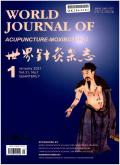针灸及相关治疗后的医院感染:病例报告和病例系列的系统回顾
IF 1.3
4区 医学
Q4 INTEGRATIVE & COMPLEMENTARY MEDICINE
引用次数: 0
摘要
背景针灸及其相关疗法作为中医的重要组成部分,已被世界各国公众和医疗保健专业人员广泛接受。根据以往的综述,针灸科是可能发生医院感染的潜在场所。目的了解医院感染的常见病原菌及可能的危险因素,提出控制和预防的措施和策略,为今后医院感染病例的报告提供一般性指导。方法系统检索2012年1月1日至2023年8月31日6个文库(EMBASE、CINAHL、PubMed、VIP、CNKI、中国医学信息网)发表的针灸及相关疗法(如艾灸、拔罐、按摩、干针)后医院感染的相关文献。纳入了提供原始数据的研究;为了防止重复的病例分析,我们排除了综述、评论和非原始数据研究。提取文献细节、研究特征和临床信息的数据。结果通过制表综合,并按治疗类型、国家收入水平、症状/诊断、病原体、风险因素、治疗和结果进行分类。结论针刺及其相关治疗后的院内感染是可能发生的,但可预防。可根据上述危险因素采取预防措施。建议今后的病例报告提供感染的具体细节,包括环境、鉴定、治疗、消毒和因果证据。本文章由计算机程序翻译,如有差异,请以英文原文为准。
Nosocomial infections after acupuncture and related therapies: A systematic review of case reports and case series
Background
Acupuncture and its related therapies, as an important part of traditional Chinese medicine, have been widely accepted by the public and healthcare professionals all over the world. According to previous reviews, the department of acupuncture is a potential place where nosocomial infection might occur.
Objectives
To investigate the common pathogens and possible risk factors for nosocomial infection, figure out the measures and strategies for control and prevention, and provide general reporting guideline for future cases.
Methods
A systematic literature search of 6 libraries (EMBASE, CINAHL, PubMed, VIP, CNKI, SinoMed) was carried out on nosocomial infection (NIs) after acupuncture and its related therapies (e.g., moxibustion, cupping, massage, dry needling) published from January 1, 2012 to August 31, 2023. Studies providing primary data were included; reviews, comments, and non-primary data studies were excluded to prevent duplicate case analysis. Data on bibliographic details, study characteristics, and clinical information were extracted. Results were synthesized through tabulation and categorized by therapy type, country income level, symptoms/diagnoses, pathogens, risk factors, treatments, and outcomes.
Conclusion
Nosocomial infections after acupuncture and its related therapies are possible but preventable. Prevention measures can be carried out in terms of the risk factors listed above. Future case reports are suggested to provide specific details of infection, including the setting, qualification, treatment, disinfection, and causal evidence.
求助全文
通过发布文献求助,成功后即可免费获取论文全文。
去求助
来源期刊

World Journal of Acupuncture-Moxibustion
INTEGRATIVE & COMPLEMENTARY MEDICINE-
CiteScore
1.30
自引率
28.60%
发文量
1089
审稿时长
50 days
期刊介绍:
The focus of the journal includes, but is not confined to, clinical research, summaries of clinical experiences, experimental research and clinical reports on needling techniques, moxibustion techniques, acupuncture analgesia and acupuncture anesthesia.
 求助内容:
求助内容: 应助结果提醒方式:
应助结果提醒方式:


